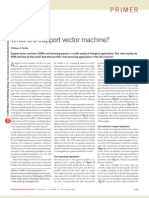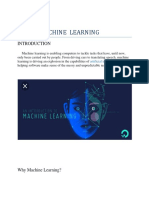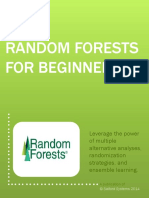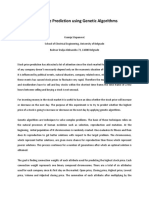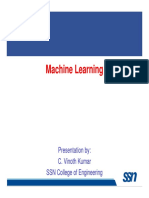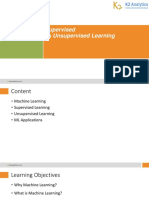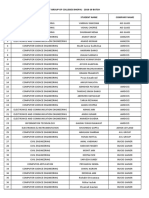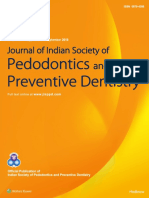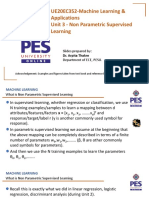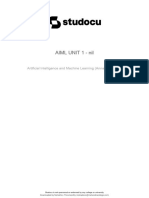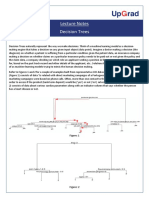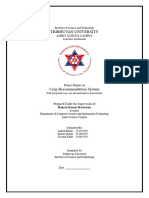0% found this document useful (0 votes)
153 views31 pagesMachine Learning With Decision Trees and Random Forest ?
The document provides an overview of decision trees and random forests machine learning algorithms. It discusses their pros and cons, how decision trees are constructed using metrics like gini impurity and information gain, and how decision trees are combined into random forests using techniques like bootstrapping. It also covers relevant performance metrics for evaluating machine learning models like accuracy, precision, recall, and the F1 score.
Uploaded by
HARSH KUMARCopyright
© © All Rights Reserved
We take content rights seriously. If you suspect this is your content, claim it here.
Available Formats
Download as PDF, TXT or read online on Scribd
0% found this document useful (0 votes)
153 views31 pagesMachine Learning With Decision Trees and Random Forest ?
The document provides an overview of decision trees and random forests machine learning algorithms. It discusses their pros and cons, how decision trees are constructed using metrics like gini impurity and information gain, and how decision trees are combined into random forests using techniques like bootstrapping. It also covers relevant performance metrics for evaluating machine learning models like accuracy, precision, recall, and the F1 score.
Uploaded by
HARSH KUMARCopyright
© © All Rights Reserved
We take content rights seriously. If you suspect this is your content, claim it here.
Available Formats
Download as PDF, TXT or read online on Scribd
/ 31








